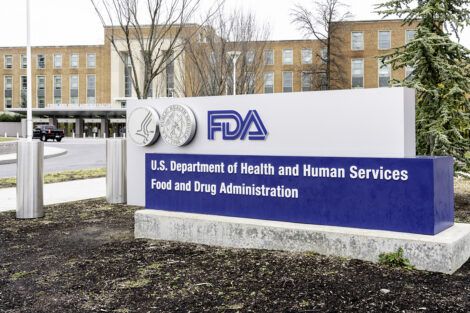October 19, 2021 – Although e-cigarette products have been sold in the U.S. for more than a decade with little regulation, the U.S. Food and Drug Administration (FDA) is currently reviewing millions of them. Recently, the agency authorized a set of three e-cigarette products for sale in the U.S. for the first time, including an e-cigarette device and two accompanying nicotine cartridges, sold under the brand name Vuse by R.J. Reynolds Tobacco. The FDA reportedly concluded that the benefit of these products in helping adult smokers reduce or eliminate their use of traditional cigarettes outweighs the risk they may pose, particularly to young people. Here, three experts from Harvard T.H. Chan School of Public Health weigh in on the FDA’s decision.
 David Christiani
David Christiani
Elkan Blout Professor of Environmental Genetics
I am disappointed by the FDA decision to authorize the marketing of this set of electronic nicotine delivery systems (ENDS). I disagree with their rationale that the benefits of vaping—a putative aid to quitting conventional cigarettes—outweigh the risks, including risks of addiction for minors.
There has been mounting evidence that kids who start using nicotine via vaping are more likely to smoke cigarettes. In addition, the toxicology of ENDS is evolving and there is scientific evidence for lung damage in human cells and in animals. Moreover, human epidemiological studies thus far have shown that vaping increases respiratory problems, increases the risk of COVID-19 infection, and leads to poor outcomes in those who are infected with COVID-19.
In addition, vaping has been linked with an acute lung injury syndrome, also known as Electronic Vaping Associated Lung Injury (EVALI). Although EVALI has been seen mainly in non-ENDS vapers—people who had reported vaping products containing THC or CBD—there were still a significant number of people with EVALI who had not vaped THC or CBD.
The evidence suggests that vaping leads to both chronic and acute adverse effects on human lungs and health—which makes the FDA decision an imprudent one. Furthermore, the ENDS products that were approved are produced by big tobacco companies and I find it disingenuous that they are touting the public health benefits of their product line after years of denying the overwhelming evidence that their products cause illness and death.
 Vaughan Rees
Vaughan Rees
Lecturer and director of the Center for Global Tobacco Control
The FDA decision is an important step in the right direction. Although the FDA has not said that the approved Vuse products are safe, it has weighed the evidence and concluded that the products provide a lower risk alternative to traditional tobacco cigarettes, which contain substantially more toxic chemical constituents. These products are not about eliminating risk; they’re about reducing risk for adult smokers in the interest of public health.
Therefore, nicotine vaping products that reduce exposure to toxins should be seen as an important public health tool. Smoking is still responsible for causing the death of almost half a million Americans each year. Many smokers want to quit, but only a small proportion of them use evidence-based treatment in a given year, and fewer than 10% of those who access treatment are able to quit. This means that current first-line interventions for smoking cessation are quite ineffective in reducing the prevalence of smoking. We urgently need newer technologies to meet the needs of smokers who are unable or unwilling to quit. E-cigarettes and other nicotine vaping devices hold great promise in that respect, but so far we have lacked properly regulated devices that lower exposure to tobacco smoke toxicants, meet the needs of adult smokers with delivery of nicotine, and hold low appeal for youth.
In addition to the products recently authorized by the FDA, I’d like to see more of them available for adult smokers. These products could be lifesavers for millions of Americans and perhaps hundreds of millions of people globally.
Naturally, there are some who are concerned that the approval of these products will lead to a spike in youth use of e-cigarettes. But vaping among adolescents has started to decline over the past year or so, and I am not convinced that we’re going to see another uptick. There have been a couple of contributors to the downturn. For one, the FDA imposed restrictions in January 2020 on kid-friendly flavors like fruit and mint, and their recent authorization was only for the sale of tobacco-flavored products. In addition, the FDA and other agencies have fielded some very strong health communication campaigns about the dangers of youth vaping.
Of course, the irony that Vuse is marketed by a tobacco company is not lost on the tobacco control community. This new milestone in tobacco control should serve as a call for all cigarette manufacturers to permanently end their sale of combustible cigarettes and embrace newer, safer technologies.
 Howard Koh
Howard Koh
Harvey V. Fineberg Professor of the Practice of Public Health Leadership
The FDA decision raises many questions about the use of harm reduction as a potential strategy for tobacco control. For other substance use disorders, harm reduction typically involves patients receiving prescription medications and clinical guidance in highly supervised medical settings. But for tobacco, these newly-authorized high-nicotine products will now be readily available without a prescription far outside any medical setting—not just for smokers who need help to quit but also non-smokers, former smokers, and children, who are particularly vulnerable. Since this announcement comes unaccompanied by either a comprehensive regulatory framework or a set of strong marketing restrictions, concerns about misuse remain high. The scientific community needs more detailed quantitative data and rigorous analyses about how potential harm reduction for adult smokers compares to potential harm increases for children and everyone else.
As for what comes next, there are other questions. Will health professionals and the public receive more guidance about how these products could—or should—be used? How will this decision be evaluated and will authorization be withdrawn if the risks are found to outweigh the benefits? Will this decision face—and withstand—legal challenges?
Ultimately, I’d like to see the FDA soon fulfill its stated goal of requiring the tobacco industry to manufacture only non-addictive, low-nicotine cigarettes. That action needs to come as quickly as possible. And most important of all, we need a more unified national approach for ending the longstanding tobacco pandemic that kills nearly half a million Americans each year.
photo: iStock
